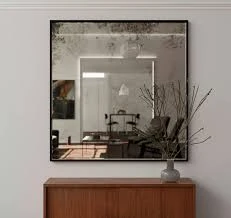

Low-E (Low Emissivity) glass is a revolutionary product in the realm of modern architecture and energy efficiency. It is designed to minimize the amount of ultraviolet and infrared light that can pass through glass without compromising the amount of visible light that is transmitted. This innovative type of glass has gained significant attention due to its impressive energy-saving properties, making it an ideal choice for residential and commercial buildings alike.
One of the primary features of Low-E glass is its thin, metallic coating that reflects heat. This coating is engineered to allow sunlight to enter the building while preventing the escape of indoor heat, thus ensuring a comfortable indoor environment. During the winter months, Low-E glass can significantly reduce heating costs by keeping warm air inside. Conversely, in the summer, it helps to keep the heat outside, lowering air conditioning costs. This dual functionality contributes to a more energy-efficient building, which is increasingly important in today’s climate-conscious society.
In addition to its energy-saving benefits, Low-E glass can enhance the comfort and quality of life for occupants. The glass reduces glare from sunlight, which can be a significant issue in offices and homes with large windows. It also protects furniture, flooring, and artwork from fading due to UV exposure, thereby preserving the aesthetic value and longevity of indoor spaces.

Low-E glass comes in different forms, including double and triple glazing, which further increases its insulation properties. These windows are sealed to prevent air infiltration, ensuring that the desired indoor climate is maintained. As a result, Low-E glass is compatible with various building designs, from contemporary skyscrapers to traditional homes.
The evolution of Low-E glass technology has also led to advancements in its aesthetics. Manufacturers have developed various tints and finishes, enabling architects and designers to utilize Low-E glass without sacrificing design elements. This has opened new avenues for creative expression while promoting sustainability.
In conclusion, Low-E glass is more than just a material; it is a testament to the intersection of technology, sustainability, and design. Its ability to significantly improve energy efficiency, enhance occupant comfort, and reduce environmental impact makes it a preferred choice for those looking to build or retrofit their spaces. As the push for greener buildings intensifies, the demand for low-emissivity glass is expected to grow, reflecting a broader commitment to sustainability and energy conservation in our world. Employing Low-E glass is not only a step towards energy efficiency but also a stride towards creating a more sustainable future, reaffirming its position as a vital component of modern architecture and environmental stewardship.